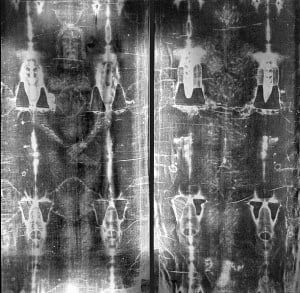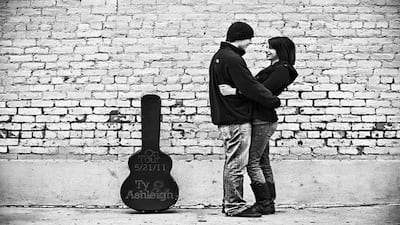
Art Historian takes a stab at explaining resurrection of Jesus
The Shroud of Turin has been a source of controversy ever since its discovery, but especially since 1989 when an attempt at radiocarbon dating suggested the shroud was a forgery, dating the Shroud of Turin somewhere in the medieval ages, between the years of 1260 and 1390. Thomas de Wesselow, an art historian from Cambridge, begs to differ. He has come out with a 448-page book, The Sign: The Shroud of Turin and the Secret of the Resurrection, that is in agreement that the Shroud of Turin image was created by the decomposition of Jesus’ body and the book also argues that the Shroud of Turin inspired the stories of his resurrection.
The Shroud of Turin is believed to hold the image of Jesus Christ in its fibers, and de Wesselow believes this image was the explanation for Jesus’ resurrection. “I’ve studied images, what they mean and how they affect people,” de Wesselow said according to MSNBC’s Alan Boyle. “In the old days, people saw images as potentially alive. They had potentially a consciousness … That type of thinking was absolutely standard before the modern age. It has nothing to do with an optical illusion, and it has nothing to do with people being stupid.” De Wesselow believes the image is a “vaporograph” and was created by a chemical reaction between the gases given off by Jesus’ decomposing body and the carbohydrates deposits on the burial cloth that laid over him. With this information, de Wesselow believes that the shroud was taken from the body and Jesus’ disciples interpreted the ghostly image as a “spiritual manifestation of their leader,” reported Boyle. De Wesselow said, “The appearances of the risen Jesus were simply viewings of the shroud image.”
De Wesselow said, when questioned about the biblical references that the resurrected Son of God spoke with the apostles and ate fish to prove he was real, “In that time, there’s plenty of room for all the legends to be added to the story,” referring to the fact that the stories were written down decades after they occurred.
Though there have not been any tests to prove that a decomposing body can leave behind an imprint, believers of the Shroud of Turin can turn to the Jospice Imprint: a cancer patient died in 1981 at an England hospice and an imprint of his body and face were left on the mattress cover. De Wesselow believes it happened by a pooling of urine around the man’s body; though, he does not believe that is what happened with the Shroud of Turin.
Of course, there are many skeptics on de Wesselow’s theory, but he believes his theory is completely reasonable. “There are explanations involving a miracle or that Jesus was spiritually resurrected and appeared in visions to his disciples,” de Wesselow told Boyle. “Since the 18th century, scientists have tried to explain the resurrection, and they’ve basically given up. They’ve basically forgotten about the whole problem. What I think I can do is provide a fairly coherent explanation, which is completely naturalistic. It’s a better alternative to the traditional Christian view.”











